Maps and Listings
The section of the Old Town to the west of La Rambla is known as El Raval. Enclosed by Ronda de Sant Antoni and Ronda de Sant Pau, in the 1930s this area was one of the most densely populated urban areas in the world, when it became derogatorily known as the Barrio Xino (literally Chinese Quarter, but meaning ‘degenerate’). It is still given a wide berth by many of Barcelona’s inhabitants. However, it is one of the districts of the city which has changed dramatically in the last few years and is a stimulating area to visit. Although some parts of El Raval are still fairly run-down, and can sometimes feel menacing, many of the city’s most interesting cultural activities are now taking place here.
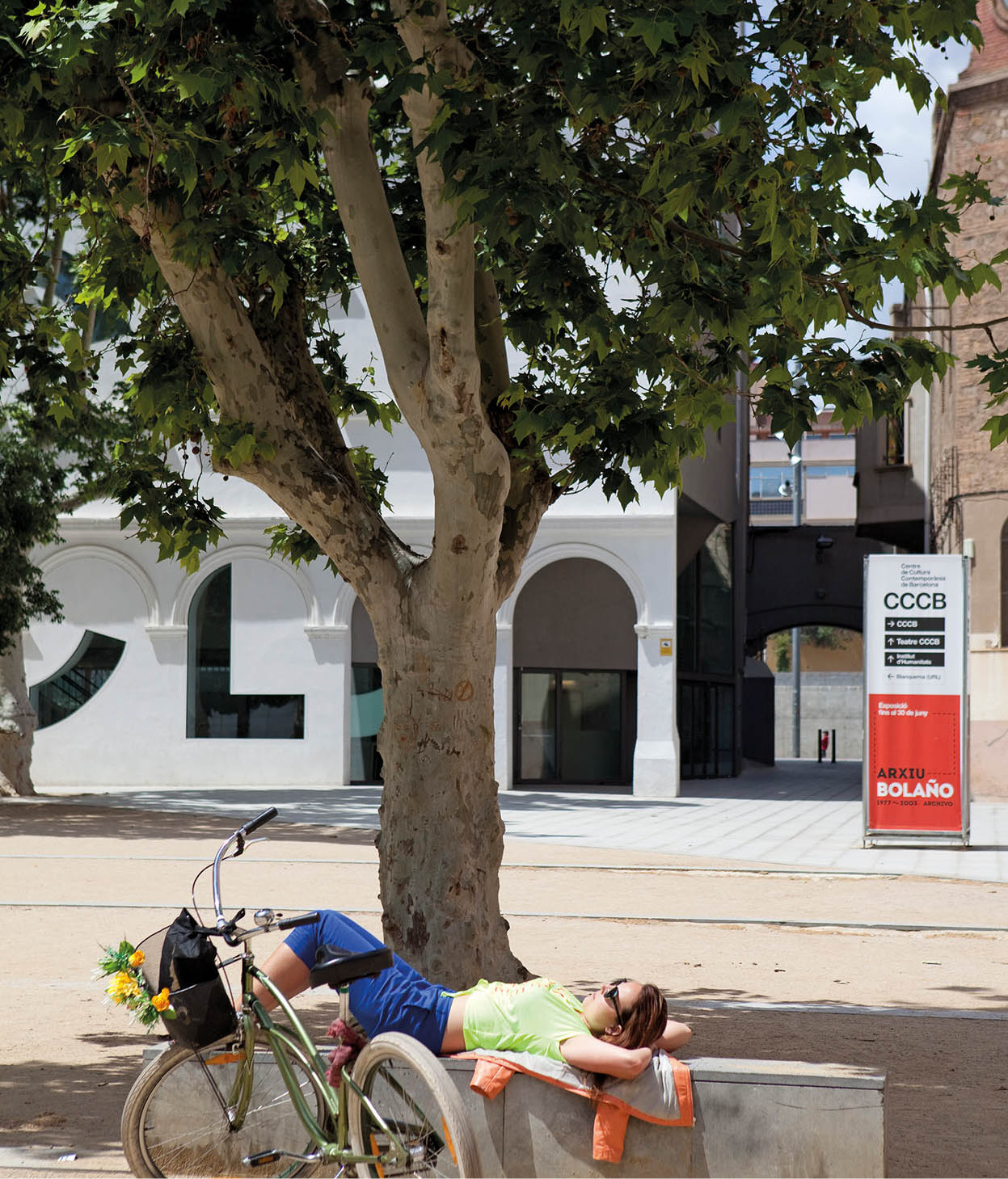
Relaxing by the CCCB.
Corrie Wingate/Apa Publications
Religious past
In its medieval past the area was heavily populated by convents and other religious institutions. With the advent of industrialisation in the late 18th century the emphasis switched to factories, and dense urbanisation began. Relics of the religious past still stand out in today’s bustling El Raval.
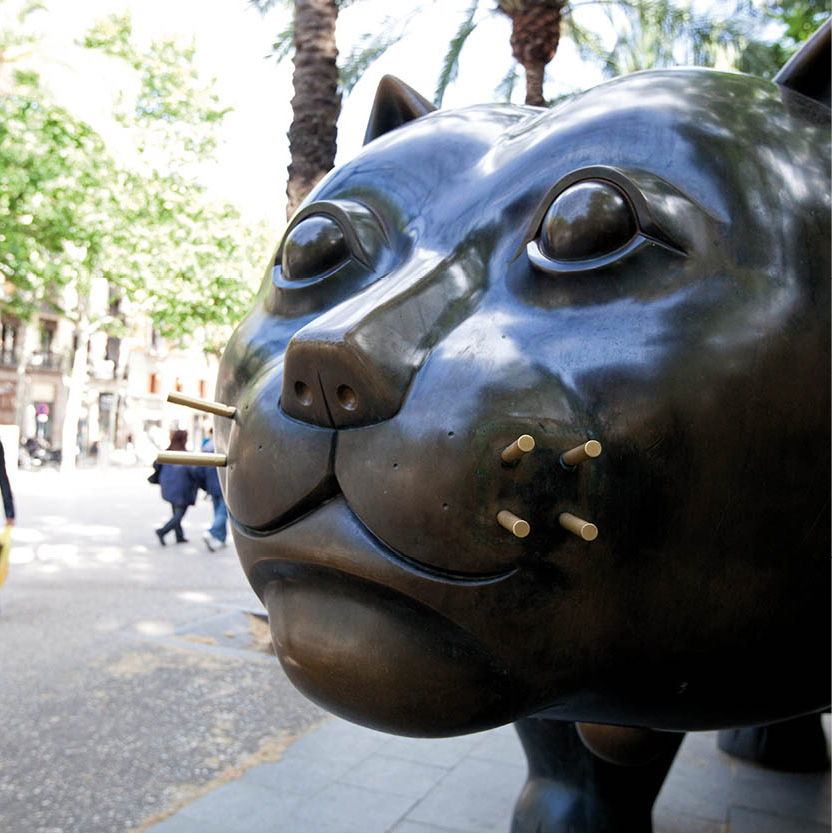
A friendly face on the Rambla del Raval.
Corrie Wingate/Apa Publications
Two pretty squares
Walking down La Rambla from Plaça de Catalunya, take the second road on the right, Bonsuccés, which opens into the Plaça Bonsuccés 1 [map]. The large building dominating the square is a former convent dating from 1635, now district council offices. The adjoining modern archway.leads into Plaça Vicenç Martorell, a square where the convent cloisters would have been. In the far corner of the arches, the popular bar Kasparo provides delicious alternative snacks, and a shady terrace on which to relax and watch children playing in the central park.
On one side of the square is the Casa de la Misericòrdia (1583), formerly a hospice for abandoned children. It has been cleverly restored, complete with interior palm tree, to make more council offices.
Tip
If you look closely at the Casa de la Misericòrdia you will see a small wooden circle in the wall, where abandoned babies were pushed through and received by nuns on the other side, until as recently as 1931.

Gerhard Richter’s ‘48 Portraits’ at MACBA.
Corrie Wingate/Apa Publications
Elisabets
Return to Plaça Bonsuccés and turn into Elisabets, by the restaurant of the same name (good for hearty winter dishes and atmosphere), heading towards the Convent dels Àngels, a MACBA exhibition space, at the end of the street. There is a good bookshop, Central, in the lofty space of the Misericòrdia chapel and some wonderful tall palms, before you pass ultra-hip hotel Casa Camper (for more information, click here), discreet in its 19th-century shell. Doctor Dou on the left has some interesting bars, good-value restaurants and art galleries. After a couple of designer shops on Elisabets is another well-renovated chapel, part of an orphanage dating back to 1370.

Taking a break.
Corrie Wingate/Apa Publications
Museu d’Art Contemporani de Barcelona (MACBA) 2 [map]
Address: Plaça dels Àngels; www.macba.cat
Tel: 93-412 0810
Opening Hrs: Mon, Wed–Fri 11am–7.30pm, Sat 10am–9pm, Sun 10am–3pm
Entrance fee: charge
Transport: Catalunya/Universitat
At this point you emerge into the Plaça dels Àngels, which opens up into the unexpected space dominated by the breathtaking Museu d’Art Contemporani de Barcelona. Opened in 1995 and designed by US architect Richard Meier, the building is dazzling against the Mediterranean sky and gigantic in the context of the humble buildings beyond. The social and urban significance of the architecture in this once declining area has been as much of a talking point as the collection inside, which comprises Catalan, Spanish and some international art, mostly from the second half of the 20th century. The museum also hosts interesting temporary exhibitions.
Its large forecourt has evolved into a world-class space for skateboarding and is also a venue for local fiestas, music festivals and dance events. The Filipino families who live in the narrow streets around Joaquín Costa often gather here on warm evenings: the square is a fascinating melting pot of local residents and cosmopolitan visitors.
MACBA was built in the grounds of the enormous Casa de la Caritat (poorhouse), which once provided a home for thousands of children (part of it still stands around the corner in Montalegre). The former 18th-century hospice has now become a centre for contemporary culture.

A well-placed café outside MACBA.
Corrie Wingate/Apa Publications
Drink
The atmospheric Marsella (on Sant Pau), serving absinthe since 1820, is lamentably threatened with closure by local authorities. But for modernista decor try London Bar in Nou de la Rambla, with live music, or Bar Muy Buenas in Carme.
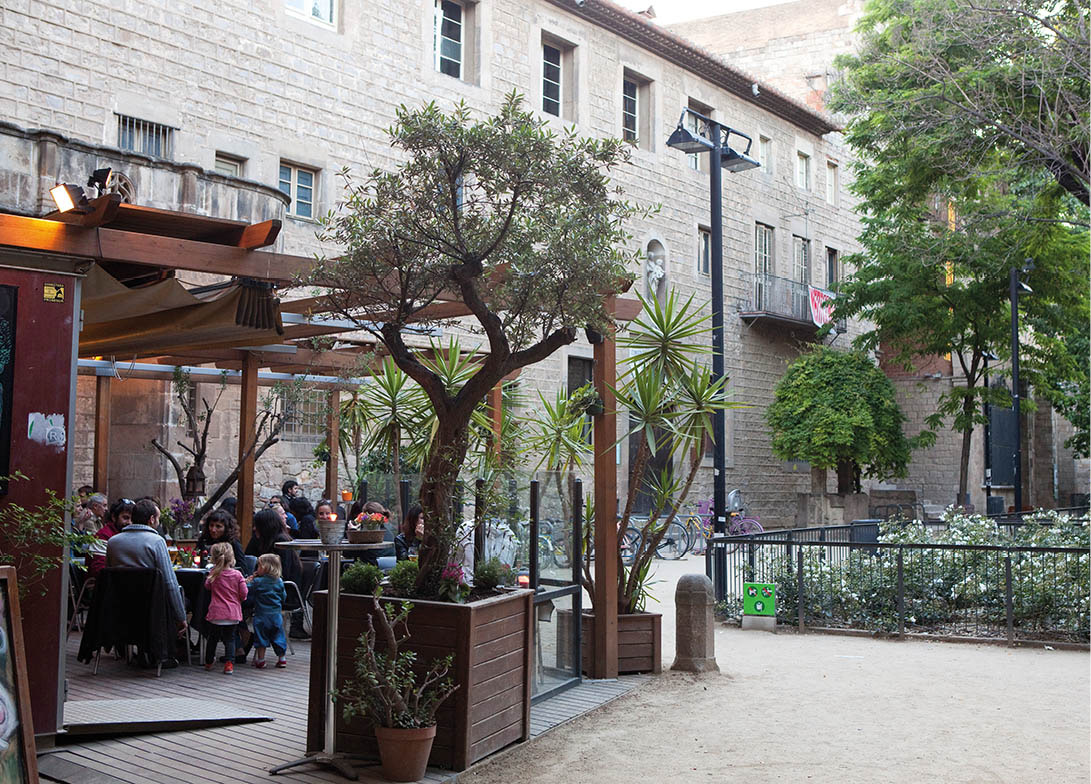
Café in the courtyard of Antic Hospital de la Santa Creu.
Corrie Wingate/Apa Publications
Centre de Cultura Contemporània de Barcelona 3 [map]
Address: Montalegre, 5; www.cccb.org
Tel: 93-306 4100
Opening Hrs: Tue–Sun 11am–8pm
Entrance fee: charge
Transport: Catalunya/Universitat
The Centre de Cultura Contemporània de Barcelona (CCCB) is a brilliant centre with a stimulating programme of diverse cultural activities, including dance, music, film, video and seminars, based on urban and contemporary issues. The complex – a renovation of the old hospice by architects Piñón and Vilaplana – rivals MACBA for its architectural interest and has great views from its Sala de Mirador.
Plaça Joan Coromines
Go through the central Patí de les Dones of the CCCB, a courtyard often used for performances or film festivals, into the Plaça Joan Coromines which links it with the MACBA art museum. The C3 Bar, with a terrace overlooking the square, is a fashionable place to meet and have a snack, and it converts into a lounge bar at night.
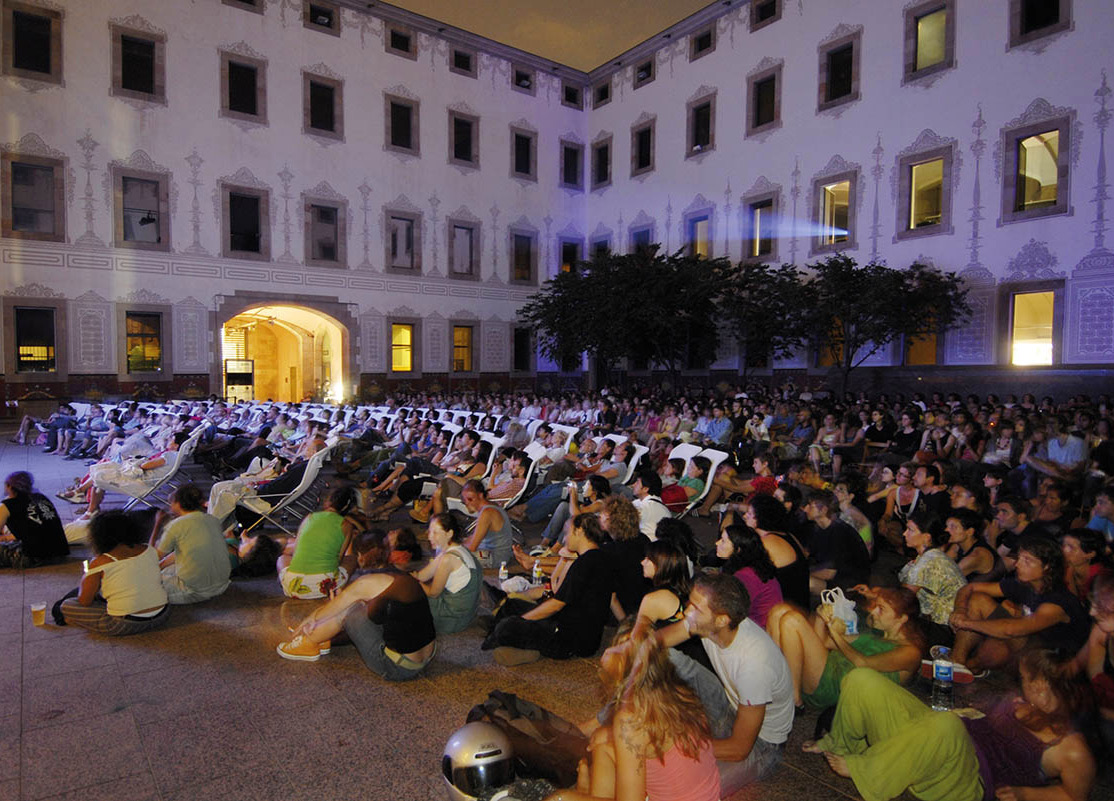
Film screening at the CCCB.
Centre de Cultura Contemporània de Barcelona
Antic Hospital de la Santa Creu 4 [map]
Address: Carrer del Carme, 47
Opening Hrs: daily 8am–9pm
Entrance fee: free
Transport: Liceu
Return to Plaça dels Àngels. Continue along the tree-lined street of Àngels to Carme, turn left and cross the road into the Antic Hospital de la Santa Creu, a large Gothic complex that was a hospital until the 1920s. On the left is the 18th-century Academy of Medicine and Surgery (open to visitors on Wednesday mornings), and on the right the Institut d’Estudis Catalans in the hospital’s Casa de Convalescència. Wander through the atmospheric cloistered patio, a favourite meeting place for the homeless but full of charm, and with a terrace café serving delicious light meals. The Biblioteca de Catalunya occupies much of the old hospital building, along with the Massana art school.
Address: Hospital, 56, http://lacapella.bcn.cat
Opening Hrs: Tue–Sat noon–2pm and 4–8pm, Sun 11am–2pm
Entrance fee: free
Transport: Liceu
As you emerge into the street, Carrer Hospital, check if there is an exhibition in La Capella, once the hospital’s chapel, which promotes young experimental artists and has interesting work on display.
Eat
El Raval is a good neighbourhood for vegetarians, as there are a number of restaurants catering to their needs, some offering organic dishes.
Multicultural Raval
With your back to La Rambla, follow Carrer Hospital deeper into El Raval. This is a busy commercial street, even on Sunday, reflecting the increasing number of shops run by Pakistanis, who are the most recent immigrant group in the district. Tandoori restaurants sit side by side with halal butchers, Arabic pastry shops, kebab bars, bazaars crammed with cheap goods and long-established tailors selling uniforms for employees in the catering business. A sign above a narrow doorway, squeezed between two shops indicates the entrance to a mezquita, one of the city’s mosques.
Trendy vintage clothes shops are another new thread in this multicoloured fabric. Riera Baixa, a short pedestrian street on the right off Hospital, is full of them and has an outdoor market on Saturday.
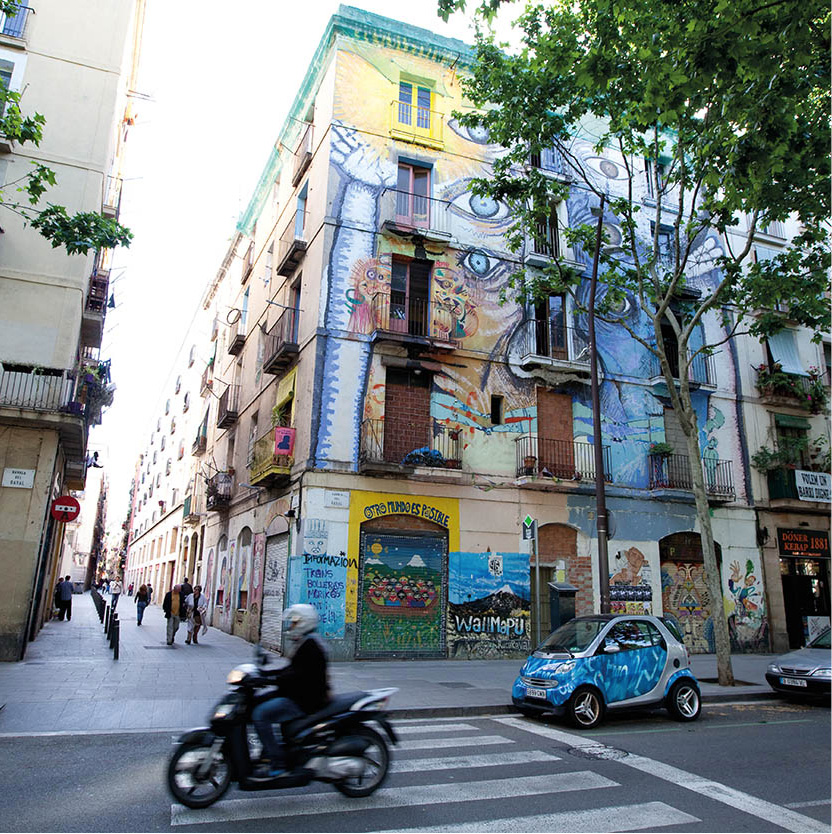
A heavily illustrated building on Rambla del Raval.
Corrie Wingate/Apa Publications

El Raval is a multicultural area.
Corrie Wingate/Apa Publications
Rambla del Raval 5 [map]
Carrer Hospital then disgorges into the new broad Rambla del Raval, not to be confused with the famous Rambla, a model example of the city council’s policy of urban regeneration. An entire street of old housing was demolished to create this pleasant promenade bordered with jacaranda and palm trees. Old residents and new immigrants enjoy the space, which is also used as a venue for a colourful weekend market and concerts. The prostitutes, thieves and junkies are still hovering, but on the whole have retreated to the narrower streets behind, where the darker side of urban life is still evident.
Tip
There’s a huge statue of a cat in the Rambla del Raval. El Gato del Raval is the work of Colombian artist Fernando Botero.
The new Rambla is lined with restaurant terraces and kebab bars. The cutting-edge five-star Barceló Raval hotel (for more information, click here), with its zany night-time lighting, towers over this new scene. Just opposite is the legendary restaurant Casa Leopoldo (for more information, click here), which was once hidden down a seedy street.
A left turn on Sant Pau leads back to the Liceu on La Rambla, past the Filmoteca de Catalunya 6 [map] (Plaça Salvador Seguí, 1–9; www.filmoteca.cat) the film library and theatre housed in a brand new building, another key piece in the urban regeneration scheme. Its busy agenda includes cycles on key film directors.
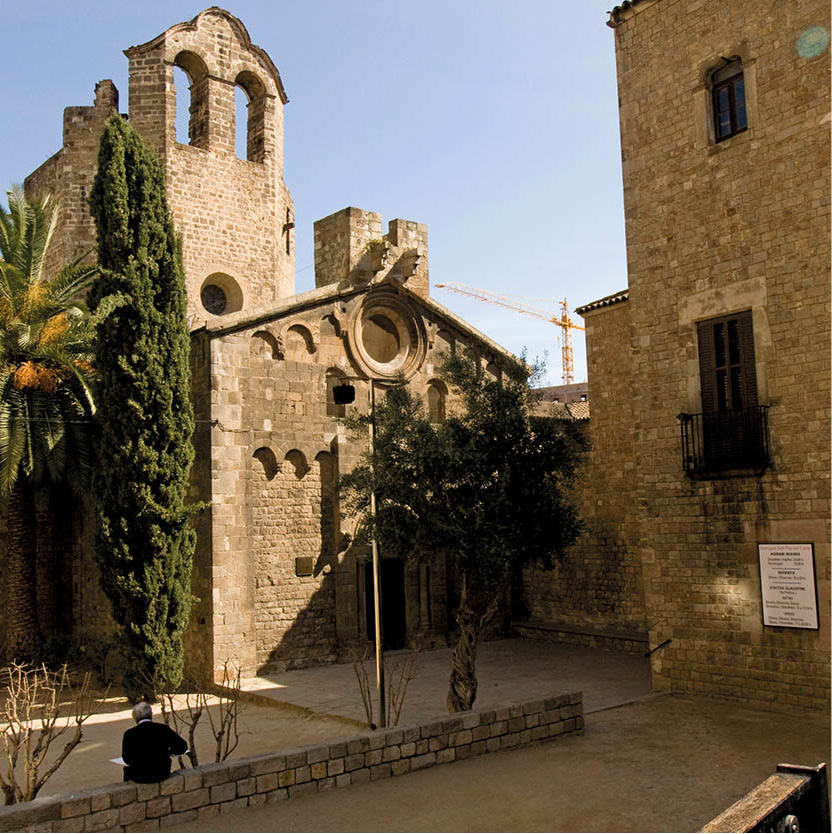
Sant Pau del Camp, Barcelona’s oldest church.
Greg Gladman/Apa Publications
Església de Sant Pau del Camp 7 [map]
Address: Sant Pau, 101–103
Tel: 93-441 0001
Opening Hrs: Mon–Sat 10am–1pm, 4–7pm
Entrance fee: charge
Transport: Paral.lel/Liceu
Alternatively, from Rambla del Raval turn right on Sant Pau to find the Romanesque church of Sant Pau del Camp, generally considered to be the oldest church in Barcelona. Surrounded by greenery, including an olive tree, a cypress and a palm, it is a true survivor in this long-beleaguered area.
Sant Pau del Camp is a fine example of Romanesque architecture, quite rare in the city. The present building dates from the 12th century, but it incorporates elements of an earlier church that was built in 912. Its small cloister, with unusual carvings, is a gem. On the exterior above the main door, look for the simple carving of the Hand of God and a winged creature, a symbolic representation of one of the Evangelists.
Much of the former industrial activity was in this lower part of El Raval – the new park behind the church was created after a fire burnt down a factory – and the park’s tall chimney is a fitting memorial to the area’s industrial past. A sports centre, Can Ricart (open to the public) has been built in a former textile factory.
Continue along the last block in Sant Pau, past the mirrored shop front of La Confiteria, a pastry shop turned stylish bar.
At the end of Sant Pau is the metro Paral.lel, where you can catch the funicular up to the Parc de Montjuïc, not far from the Fundació Joan Miró (for more information, click here).
Shopping
As this neighbourhood becomes trendier and the cultural centres attract a discerning crowd, the shopping options are changing accordingly. Quirky fashion boutiques, vintage stores and shops with a designer theme await you.
Accessories
Vaho Gallery
Bonsuccés, 13
This creative, socially responsible firm produces a huge range of practical, attractive bags for men and women, all made out of recycled plasticised banners that once hung in the city streets.
Books
La Central del Raval
Elisabets, 6
Take time out in this soothing, huge bookshop, which occupies the 16th-century former chapel of the Casa de la Misericòrdia. Find coffee-table books on art, photography and Barcelona, among the many tomes.
Laie CCCB
Montalegre, 5
You could browse for hours in the Contemporary Culture Centre’s bookshop, well-stocked with publications on art, architecture, film and other contemporary issues, plus stylish souvenirs like Gaudí tile coasters or vinyl fans.
Clothing
Riera Baixa is a pedestrian street with a concentration of vintage clothing shops, which take their wares, including accessories and records, out onto the street on Saturdays. In other parts of the neighbourhood:
Holala! Plaza
Plaça de Castella, 2
An emporium of second-hand clothes on several levels, mixed with furniture and all sorts of random accessories. Beware that vintage is not synonymous with cheap in Barcelona.
Home
El Indio
Carme, 24
A wonderful fabric shop that seems to be arrested in time. Behind its untouched modernista facade and entrance is a deep shop, lined with bolts of cloth and long wooden tables for measuring them.
Room Service
Àngels, 16
Somewhere between a studio, shop and gallery, this space shows (and sells) contemporary design, with particular focus on ecological and sustainable issues. It’s inspiring to visit, even if a table won’t fit into your luggage.
Markets
Mercat Raval
Rambla del Raval
This weekend market runs most of the length of this relatively new rambla, bringing a splash of vibrant colour. Independent designers sell clothes, jewellery, accessories and kids’ clothes, and you’ll also find Moroccan jewellery, babouches and mint tea.
Music
Discos Revolver
Tallers, 11
This is just one of several record shops in this street just off La Rambla, where vinyl collectors are bound to find something they desire.
Etnomusic
Bonsuccés, 6
A small shop with a fantastic collection of world music. If they don’t have what you’re looking for, they will try to obtain it. Good vibes.
Shoes
Camper
Plaça de los Àngeles, 4
Just beyond the eponymous super-trendy hotel is a small Camper shoe shop. It’s not as busy as some branches, which makes it all the better for choosing one of the idiosyncratic designs, which have turned this Mallorcan shoemaker into a world player.
Vialis
Elisabets, 20
Another successful Catalan shoemaker, the Menorcan designer behind Vialis creates wonderful shoes in the softest Italian leather, even the sensible lace-ups have a feminine edge.
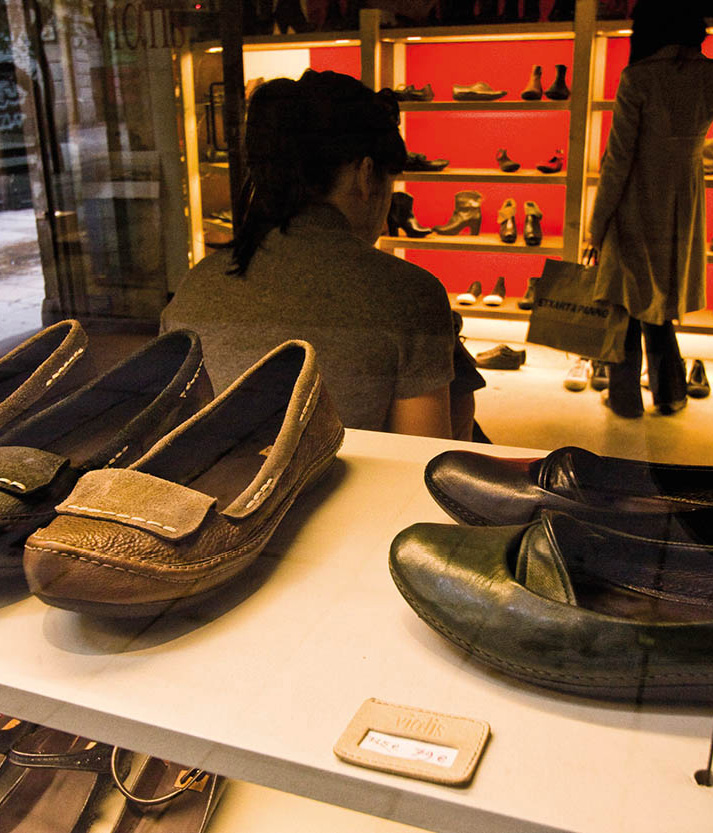
Shoes at Vialis.
Greg Gladman/Apa Publications
